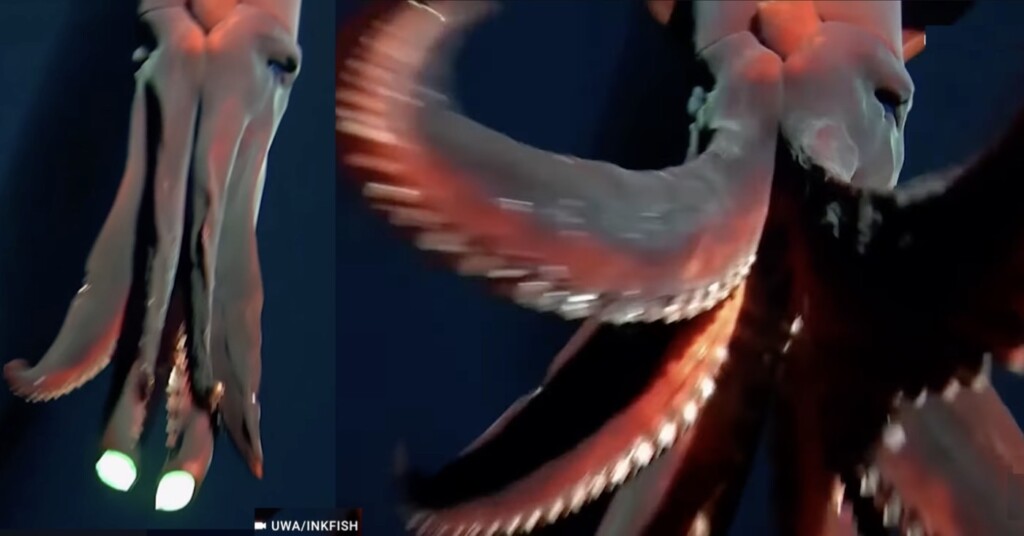
Australian marine biologists recently captured video of a large, deep-water squid attacking one of their cameras over 3,000 feet below the surface of the ocean.
The deep-sea hooked squid is one of the largest deep-dwelling squid species, but rather than the animal’s size, it was the glowing lights on the end of its tentacles that most interested scientists.
A team from the Minderoo campus of the University of Western Australia’s Deep Sea Research Center was deploying baited, free-falling cameras to record video footage of deep-sea life.
Chief scientist Heather Stewart, from the collaborating Kelpie Geosciences, UK, and an adjunct at UWA, was working in an area known as the Samoan Passage where she let the camera fall to 5 kilometers down before recovering it.
“As we were reviewing the footage, we realized we had captured something very rare,” Stewart said.
They had found a Taningia danae, or deep-sea hooked squid, renowned for having the largest photophores of any animal known. Photophores are bioluminescent organs that form a part of the squid’s hunting strategy—flashing fish with bright light to disorient them in the lead-up to an attack.
MARVEL AT MARINE LIFE: Amazing Video of Giant Phantom Jellyfish from Deep in the Dark Fathoms at 3,200 Feet – WATCH
“The squid, which was about [30 inches] 75cm long, descended on our camera assuming it was prey, and tried to startle it with its huge bioluminescent headlights,” Stewart added.
Professor Alan Jamieson, director of the Minderoo-UWA Deep Sea Research Center, said observing deep-sea squid in their natural habitat, especially in the mid-water, was notoriously challenging.
MORE DEEP SEA STORIES: Man Who Found World’s Deepest-Dwelling Octopus and Jellyfish Scores 3-of-a-Kind, With Deepest-Dwelling Squid
“Many records of this species are from strandings, accidental bycatch or from the stomach contents of whales,” Professor Jamieson said.
“The rarity of live observations of these amazing animals makes every encounter valuable in gathering information on geographic locations, depth, and behavior, plus it is such a unique animal that we hardly ever get to see, so we had to share it.”
WATCH the video with narration below…
SHARE This Amazing Encounter Of The Deeps With Your Friends…




















